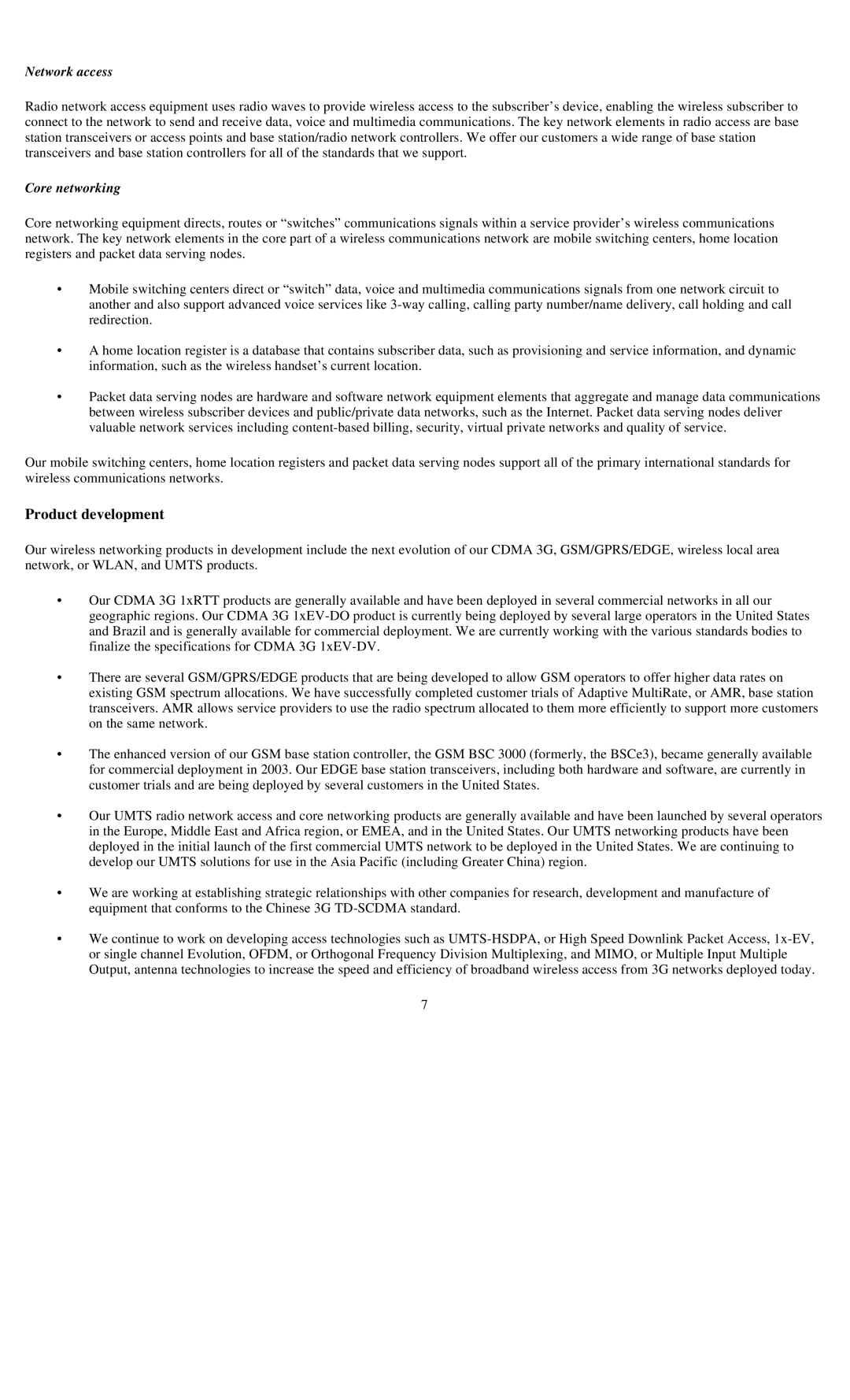Network access
Radio network access equipment uses radio waves to provide wireless access to the subscriber’s device, enabling the wireless subscriber to connect to the network to send and receive data, voice and multimedia communications. The key network elements in radio access are base station transceivers or access points and base station/radio network controllers. We offer our customers a wide range of base station transceivers and base station controllers for all of the standards that we support.
Core networking
Core networking equipment directs, routes or “switches” communications signals within a service provider’s wireless communications network. The key network elements in the core part of a wireless communications network are mobile switching centers, home location registers and packet data serving nodes.
•Mobile switching centers direct or “switch” data, voice and multimedia communications signals from one network circuit to another and also support advanced voice services like
•A home location register is a database that contains subscriber data, such as provisioning and service information, and dynamic information, such as the wireless handset’s current location.
•Packet data serving nodes are hardware and software network equipment elements that aggregate and manage data communications between wireless subscriber devices and public/private data networks, such as the Internet. Packet data serving nodes deliver valuable network services including
Our mobile switching centers, home location registers and packet data serving nodes support all of the primary international standards for wireless communications networks.
Product development
Our wireless networking products in development include the next evolution of our CDMA 3G, GSM/GPRS/EDGE, wireless local area network, or WLAN, and UMTS products.
•Our CDMA 3G 1xRTT products are generally available and have been deployed in several commercial networks in all our geographic regions. Our CDMA 3G
•There are several GSM/GPRS/EDGE products that are being developed to allow GSM operators to offer higher data rates on existing GSM spectrum allocations. We have successfully completed customer trials of Adaptive MultiRate, or AMR, base station transceivers. AMR allows service providers to use the radio spectrum allocated to them more efficiently to support more customers on the same network.
•The enhanced version of our GSM base station controller, the GSM BSC 3000 (formerly, the BSCe3), became generally available for commercial deployment in 2003. Our EDGE base station transceivers, including both hardware and software, are currently in customer trials and are being deployed by several customers in the United States.
•Our UMTS radio network access and core networking products are generally available and have been launched by several operators in the Europe, Middle East and Africa region, or EMEA, and in the United States. Our UMTS networking products have been deployed in the initial launch of the first commercial UMTS network to be deployed in the United States. We are continuing to develop our UMTS solutions for use in the Asia Pacific (including Greater China) region.
•We are working at establishing strategic relationships with other companies for research, development and manufacture of equipment that conforms to the Chinese 3G
•We continue to work on developing access technologies such as
7
